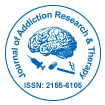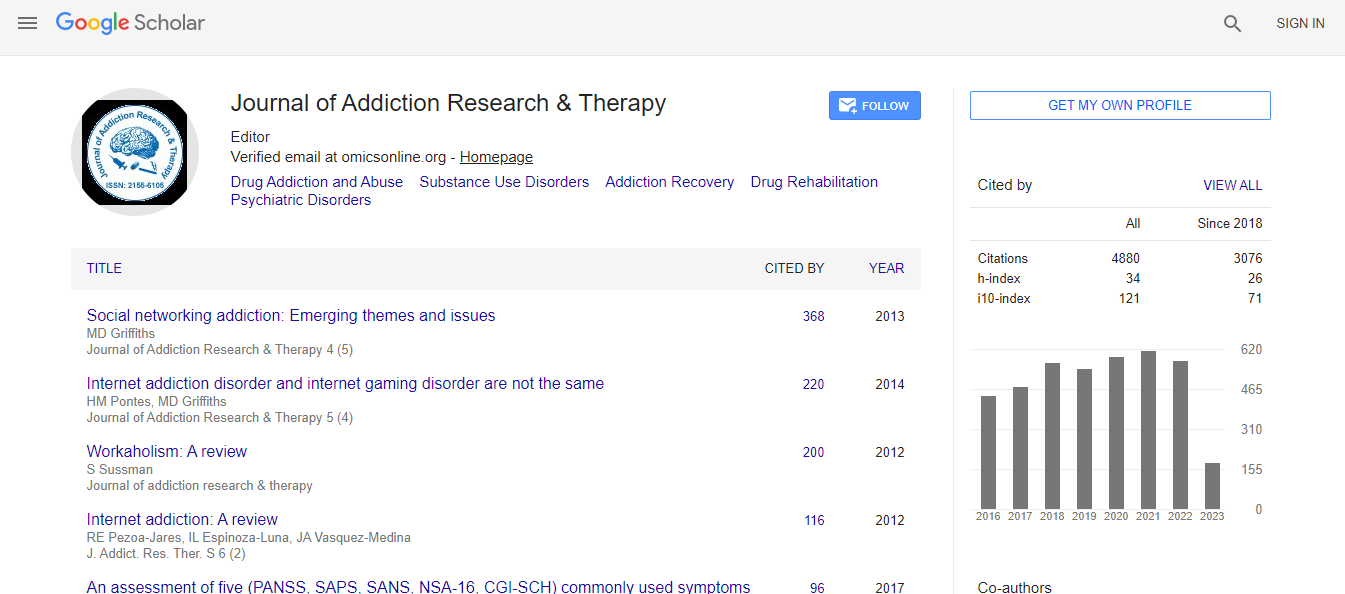Research Article
Construction of a Standardized Clinical Interview to Assess Internet addiction: First Findings Regarding the Usefulness of AICA-C
Wölfling K1, Beutel ME2 and Müller KW1*1Outpatient Clinic for Behavioural Addiction, Department of Psychosomatic Medicine and Psychotherapy, University Medical Center, Johannes Gutenberg University Mainz, Germany
2Director of the Department of Psychosomatic Medicine and Psychotherapy, University Medical Center, Johannes Gutenberg University Mainz, Germany
- *Corresponding Author:
- Kai W. Müller
Department of Psychosomatic Medicine and Psychotherapy
University Medical Center
Johannes Gutenberg University Mainz
Untere Zahlbacher Straße 8
55131 Mainz, Germany
Tel: +49-6131-174039
Fax: +49-6131-176439
E-mail: muellka@uni-mainz.de
Received June 20, 2012; Accepted July 16, 2012; Published July 21, 2012
Citation: Wölfling K, Beutel ME, Müller KW (2012) Construction of a Standardized Clinical Interview to Assess Internet addiction: First Findings Regarding the Usefulness of AICA-C. J Addict Res Ther S6:003 doi:10.4172/2155-6105.S6-003
Copyright: © 2012 Wölfling K, et al. This is an open-access article distributed under the terms of the Creative Commons Attribution License, which permits unrestricted use, distribution, and reproduction in any medium, provided the original author and source are credited.
Abstract
Study background: Inclusion of Internet addiction into the upcoming revision of DSM-V has been discussed recently. However, its nosological features and diagnostic criteria have remained a matter of debate. Core criteria have been suggested for classification, including craving, tolerance and loss of control. Whereas some questionnaire-based diagnostic tools assess internet addiction, of standardized clinical interviews are still missing. Operationalizing internet addiction by such an interview, akin to the structured clinical interview for DSM Disorders would be beneficial identifying internet addiction, also as a co-morbid disorder in patients suffering from any form of mental illness. Methods: In a specialized clinic a short clinical interview (checklist for the Assessment of Internet and Computer game Addiction, AICA-C) including six core criteria of internet addiction was developed. To generate clinical cut-offs, test its psychometric property and clinical validity, 141 patients were assessed with AICA-C along with further clinical questionnaires and expert ratings, like global assessment of functioning. Trained clinician’s rating regarding presence of internet addiction was used as an external criterion to determine the predictive validity of AICA-C. Results: Items of AICA-C display sound psychometric properties. A preliminary cut-off was determined by using therapist’s rating of internet addiction. This cut-off yielded a sensitivity of 85.1% and specificity of 87.5%. Significant correlations to both, self-report data, like Symptom Checklist-90R and expert ratings, like global assessment of functioning were found. Conclusion: AICA-C can be regarded as a useful and economic tool to assess internet addiction in an oral clinical exploration. Due to its economic applicability in combination with good detection rates, its implementation in the daily routine of psychosomatic and psychiatric institutions can be considered as a promising way to diagnose (co-morbid) internet addiction.

 Spanish
Spanish  Chinese
Chinese  Russian
Russian  German
German  French
French  Japanese
Japanese  Portuguese
Portuguese  Hindi
Hindi 
